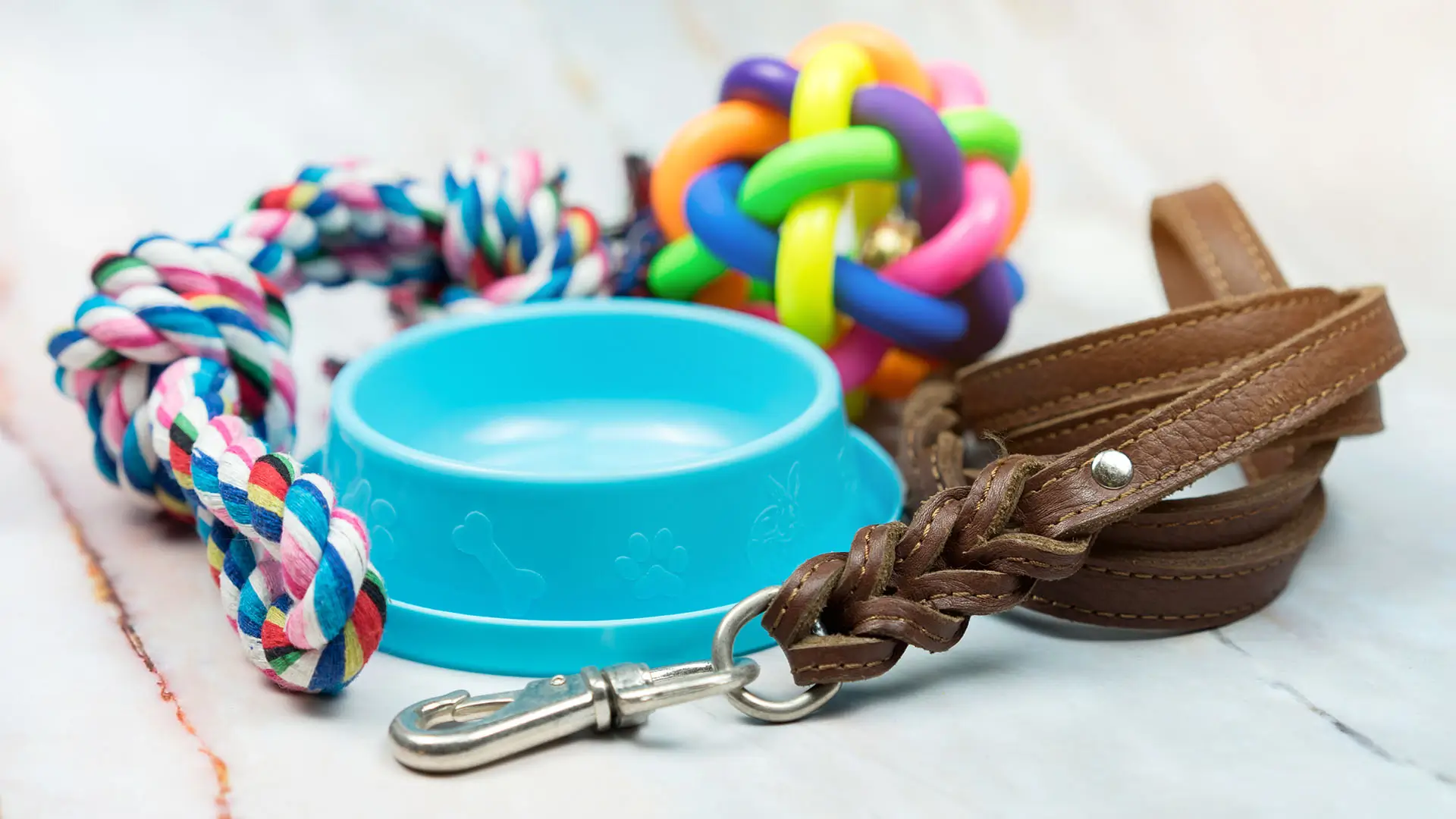Welcoming a new addition to your animal crew is an exciting time in any pet lover’s life. Joy, fun — and chaos — are sure to be new constants in your life. Yet as wonderful as growing your pet family is, the transition period when adding a new member can be bumpy at times. Understanding how to navigate the new dynamic helps both your old and new pets feel more at ease with the situation — and with one another.
Prepare Your Home for a New Pet
A new environment can be overwhelming for even the most social of animals. It can take time to feel at ease, and for many pets, the change can be stressful. Ensuring your home is ready for introducing a new pet can go a long way in improving the experience.
New Pet Supplies Checklist
Before bringing your new pet home, our vet team recommends that you have these essential supplies:
- Food and water bowls
- Appropriate food for your pet’s age and species
- Collar with ID tag
- Leash (for dogs)
- Bed or crate
- Toys
- Grooming supplies
- Litter box and litter (for cats)
- Scratching post (for cats)
Let New Pet Wander Home Without Distractions
When you first bring your new pet home, allow them to explore their new environment at their own pace. Keep the house quiet and calm, and avoid overwhelming them with too much attention or too many new people. This gives them time to familiarize themselves with the sights, sounds, and smells of their new home and can ease new pet anxiety.
Create a Separate Safe Space for Your Pet
Every pet needs a safe haven where they can retreat when feeling overwhelmed or anxious. This is especially important if there are other pets in the home. Set up a quiet area with your new pet’s bed, toys, and water bowl. For dogs and cats, this might be a spare room or a corner of your bedroom.
If you have multiple pets, it’s crucial to maintain separate safe spaces for each animal. This allows them to have their own territory and reduces potential conflicts as they adjust to living together.
Introduce Pets’ Scent to Each Other Before Introduction
Before face-to-face introductions, help your pets become familiar with each other’s scents. Swap bedding between your new and existing pets, or gently rub a towel on one pet and let the other sniff it. This helps reduce the “stranger danger” effect when they finally meet in person.
Choose Neutral Territory to Introduce New Pet to Other Housemates
When it’s time for your pets to meet, choose a neutral area where neither pet feels territorial. This could be a room that your existing pet doesn’t frequent or even an outdoor space like a fenced yard. Keep initial meetings short and positive, and always supervise these interactions closely.
Give Positive Reinforcement to All Pets When Behaving
Reward good behavior from all your pets during the introduction process. Offer treats, praise, and attention when they remain calm and friendly around each other. This positive reinforcement helps create a pleasant association with the other pet’s presence.
Feed Separately in the Same Room
Once your pets are comfortable in each other’s presence, try feeding them in the same room but at a distance from each other. This helps them associate good things (like food) with the other pet’s presence. Gradually decrease the distance between their feeding areas over time as they become more comfortable.
Establish and Maintain Routine
Pets thrive on routine, and this is especially important when introducing a new pet to your home or with kitten or puppy care. Try to keep feeding times, walks, and playtimes consistent. This helps reduce stress for both new and existing pets and provides a sense of security in their changing environment.
Patience is Key for Success
Remember that successful pet introductions take time. Some pets may become fast friends, while others may need weeks or even months to fully adjust. Be patient and never force interactions. Allow your pets to set the pace for their relationship. Once your pet is settled in their new home, we recommend scheduling a wellness exam to ensure they’re adjusting well and to establish a baseline for their health. This initial check-up helps address any immediate concerns and sets the stage for ongoing preventive care. Our Maple Grove veterinarians also offer convenient microchipping services to help ensure your new pet’s safety and increase the chances of a quick reunion if they ever get lost.
Consult with One of Our Maple Grove Veterinary Professionals
At Maple Grove Pet Hospital, we understand that each pet and household is unique. If you’re having difficulties with pet introductions or have concerns about your pets’ behavior, don’t hesitate to reach out or book a new patient appointment. Our experienced veterinary team can provide personalized advice and strategies to ensure a smooth transition for all your furry family members.
